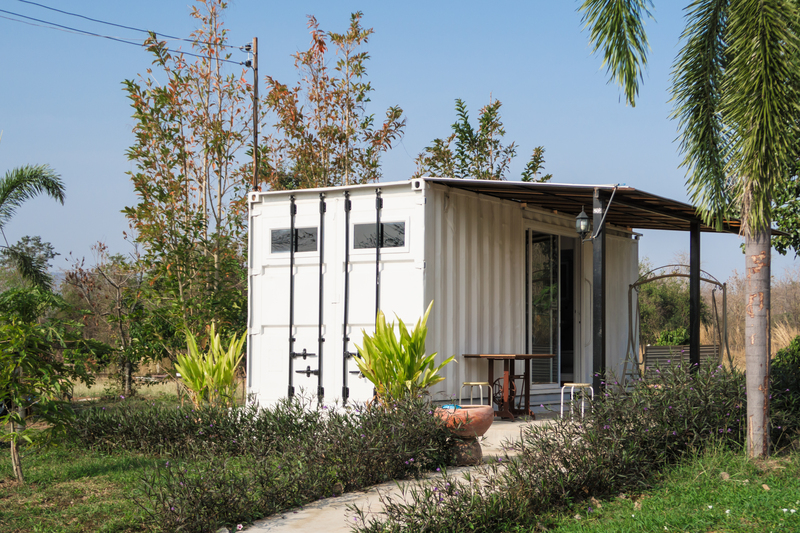Protecting the Planet While Disposing of PPE Waste
The proliferation of Personal Protective Equipment (PPE) has become a defining feature of our response to global health crises. However, the increase in PPE waste poses serious challenges for our environment. From disposable face masks and gloves to face shields and gowns, these single-use items help limit the spread of disease--but often at the expense of our planet. In this comprehensive guide, we delve into methods for protecting the planet while disposing of PPE waste, examining sustainable solutions, innovative technologies, and actionable tips for individuals and organizations alike.
1. The Environmental Impact of PPE Waste
Understanding the scope of the problem is essential. Before the pandemic, PPE was predominantly used in healthcare settings. However, its use has now gone mainstream, with an estimated 129 billion face masks and 65 billion gloves being used globally per month during peak pandemic periods. Much of this PPE waste is made from non-biodegradable plastics, such as polypropylene, which can take centuries to decompose, posing a significant threat to our ecosystems.
- Ocean Pollution: Discarded PPE often ends up in waterways, threatening marine life.
- Microplastics: As PPE breaks down, it creates microplastics that contaminate soil and water.
- Landfill Overflow: Landfills are overwhelmed by the sheer volume of PPE waste.
- Wildlife Risks: Animals can become entangled in or ingest PPE, leading to injury or death.

2. How to Dispose of PPE Responsibly
Protecting the environment while disposing of PPE waste requires a balance between safety and sustainability. The following steps outline best practices for individuals and organizations seeking to reduce their ecological footprint.
Step 1: Avoid Littering at All Costs
Careless disposal is the top driver of environmental contamination. Always place used PPE in designated waste bins. Littering can cause PPE to end up in storm drains, rivers, and oceans, amplifying pollution concerns.
Step 2: Use Separate PPE Waste Bins
- Have a clearly-labeled PPE waste bin in your home, office, or public location.
- These bins should ideally have a lid and be lined with a sturdy bag to prevent leaks and contamination.
- Sterile or contaminated PPE should not be mixed with recyclable materials or general waste.
Step 3: Do Not Attempt to Recycle Used PPE at Home
While recycling is a great solution for many waste streams, most municipal recycling systems do not accept PPE. Attempting to recycle contaminated items can endanger workers and contaminate recycling loads.
Step 4: Seal and Dispose
- Always seal used PPE in a plastic bag before disposal to minimize contamination risks.
- Disinfect the outside of the bag if possible, especially if the PPE was used in a high-risk setting.
3. Sustainable Alternatives to Disposable PPE
One of the most effective ways to cut down on PPE environmental impact is to minimize reliance on single-use items. Consider adopting the following sustainable alternatives:
- Reusable Masks: Cloth masks, when properly washed and maintained, can offer comparable protection for the general public.
- Washable Gowns & Gloves: Many medical facilities are switching to textile-based gowns and gloves that can be laundered.
- Eco-Friendly Materials: New developments in biodegradable PPE are gaining traction, from starch-based masks to plant-derived face shields.
It's essential to follow manufacturer instructions regarding care and reuse to maintain efficacy while reducing waste.
4. Innovations in PPE Waste Recycling
Although most disposable PPE cannot be recycled through household programs, specialized recycling initiatives are making a difference:
PPE Recycling Programs
- TerraCycle: Some programs, like TerraCycle's Zero Waste Box, allow individuals, schools, and businesses to send in PPE for processing. Items are separated, disinfected, and turned into plastic pellets for new products.
- Hospital Partnerships: Some hospitals have started programs to collect and recycle PPE waste with specialized contractors.
Biodegradation Technologies
- New research is focusing on biodegradable materials and enzymatic treatments to break down PPE plastics more quickly than traditional methods.
- Pilot programs are using compostable PPE in controlled environments to reduce landfill burden.
5. Practical Tips for Reducing PPE Waste
Every small action counts in the fight to protect the earth from PPE pollution. Here's what individuals, organizations, and governments can do:
Individuals:
- Choose reusable PPE where possible, especially for routine, non-medical use.
- Educate others about the environmental impact of PPE and share proper disposal practices.
- Support or participate in local PPE waste collection or recycling initiatives.
Organizations:
- Provide staff and visitors with clear guidance on PPE disposal using signage and training.
- Partner with specialty waste management firms to collect and process PPE waste safely and sustainably.
- Consider purchasing eco-friendly or reusable PPE in bulk for employees.
Government and Industry:
- Invest in research and development for biodegradable and recyclable PPE materials.
- Fund public awareness campaigns to reduce PPE littering and improper disposal.
- Establish and standardize protocols for the collection and treatment of PPE waste in public spaces.
6. The Importance of Public Education and Behavioral Change
Long-term change starts with knowledge and action. The improper disposal of PPE often stems from a lack of awareness, not a lack of care. Governments, media, and community leaders play a vital role in disseminating information regarding safe and sustainable PPE use and disposal practices.
Engaging the public with educational materials, social media campaigns, and community cleanups can make a lasting difference. The more we know about the consequences of PPE waste, the more likely we are to choose environmentally-conscious alternatives and disposal methods.
7. Case Studies: Successful PPE Waste Management Initiatives
The NHS PPE Recycling Program (UK)
The U.K.'s National Health Service piloted a program to collect used masks and gowns and transform them into construction materials. By working with recycling specialists, the NHS dramatically reduced their landfill contributions while modeling responsible disposal.
TerraCycle PPE Zero Waste Boxes (Global)
Companies, schools, and municipalities worldwide can now purchase PPE collection boxes for staff and the public. These are mailed to a recycling center, where PPE is disinfected, shredded, and reformed into new products, closing the loop on the PPE lifecycle.
Eco Mask Projects (India and Southeast Asia)
Nonprofits and small businesses partnered to collect discarded face masks, sanitize them, and integrate the materials into construction bricks for low-cost housing. Such creative upcycling projects highlight the potential to convert PPE waste into societal good.
8. The Future of PPE and the Circular Economy
Moving forward, our approach to PPE waste must evolve from a linear "take, make, dispose" model to a circular economy. This means designing PPE that is:
- Manufactured from biodegradable or reusable materials
- Easy to collect and recycle at the end of its lifecycle
- Produced and distributed with minimal carbon footprint
Policymakers, manufacturers, healthcare providers, and the public each have a role to play in enabling this transition. Investment in research and collaboration across sectors will be crucial for advancing sustainable PPE solutions.

9. Frequently Asked Questions (FAQs) About PPE Waste Disposal
Can face masks and gloves be recycled?
Most disposable face masks and gloves cannot be recycled via standard curbside programs, as they may be contaminated and are made of plastics that are not accepted by traditional facilities. Specialized PPE recycling programs, such as those offered by TerraCycle, provide a safe alternative for large-scale collection and processing.
Are biodegradable PPEs safe and effective?
Biodegradable PPEs are being developed and tested worldwide. Many offer comparable filtration and barrier properties to conventional PPE. It is important to check certifications before switching to ensure safety and effectiveness.
What should I do if there is no specialized PPE recycling in my area?
If no specialized facilities are available, the best practice is to seal used PPE in a plastic bag and dispose of it in regular waste. Remember, never put used PPE in household recycling bins, and most importantly, never litter.
10. Conclusion: It's Time to Protect Both Our Health and Our Planet
Protecting the planet while disposing of PPE waste is an urgent and ongoing challenge that demands our attention. By adopting responsible disposal habits, supporting innovative recycling programs, and choosing sustainable solutions whenever possible, we can all play a part in minimizing the environmental footprint of PPE. With education, commitment, and innovation, a cleaner, safer future is within reach.
- Always dispose of PPE responsibly.
- Advocate for eco-friendly PPE in your community.
- Support and participate in recycling and upcycling efforts.
Remember: Protecting ourselves does not have to come at the cost of our planet. Let's commit to respecting both public health and environmental health with every piece of PPE we use.